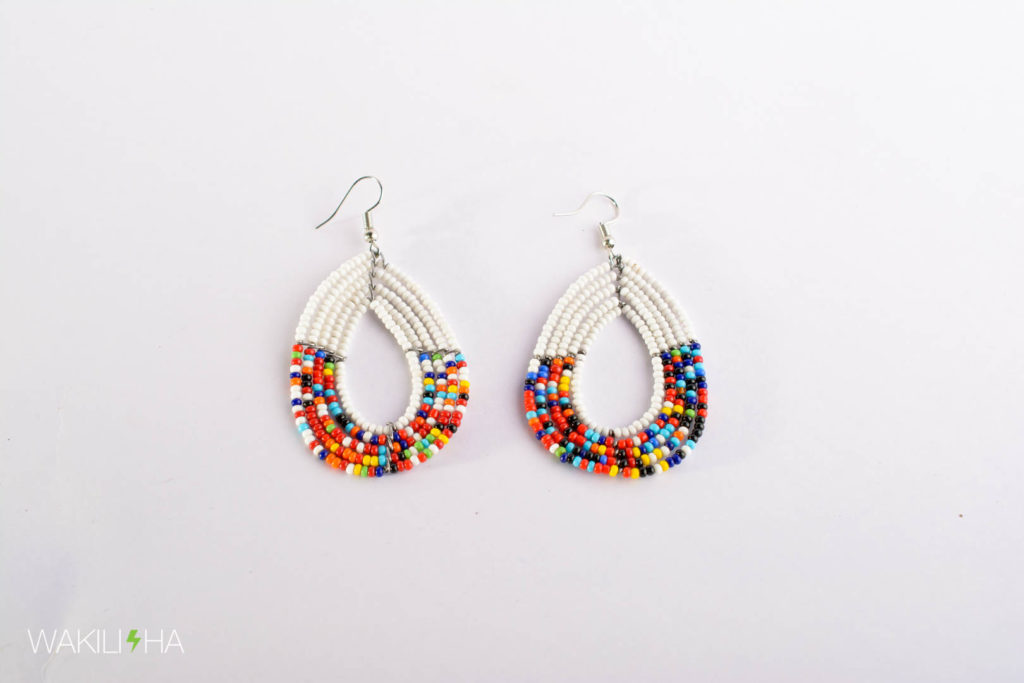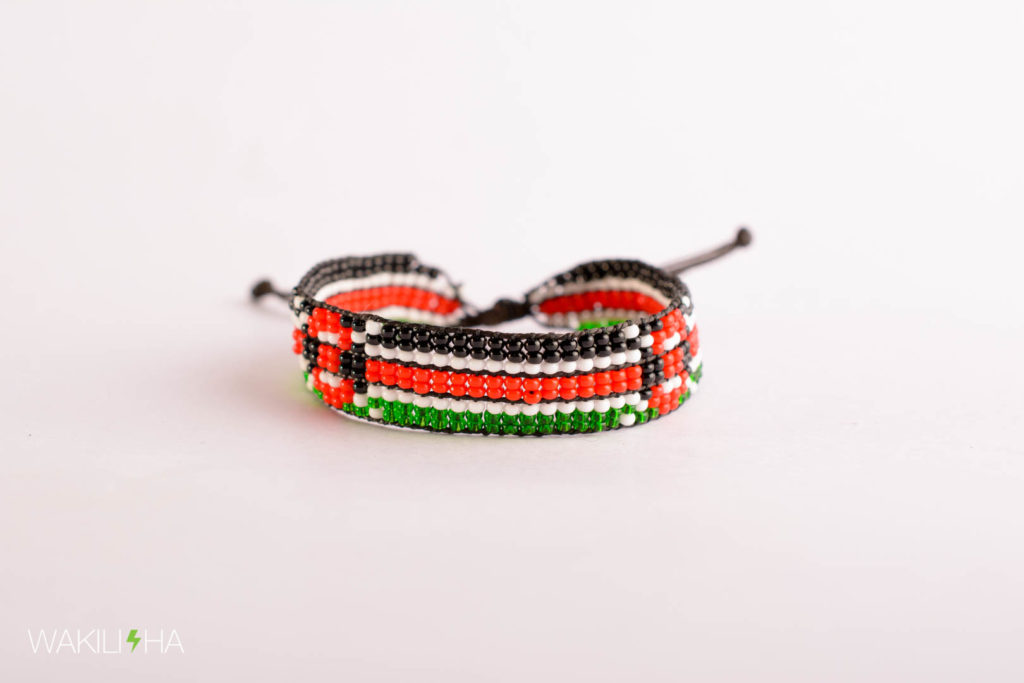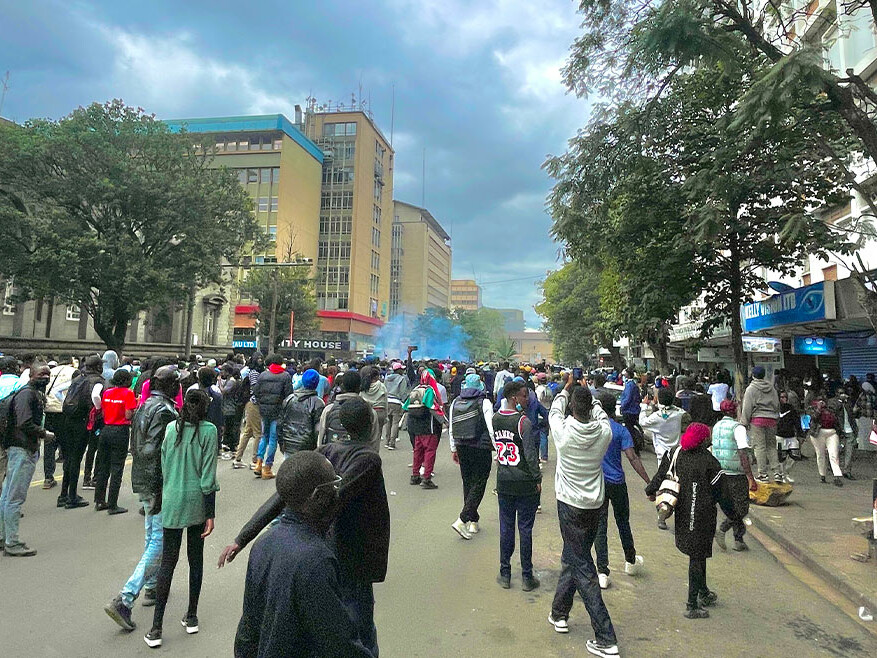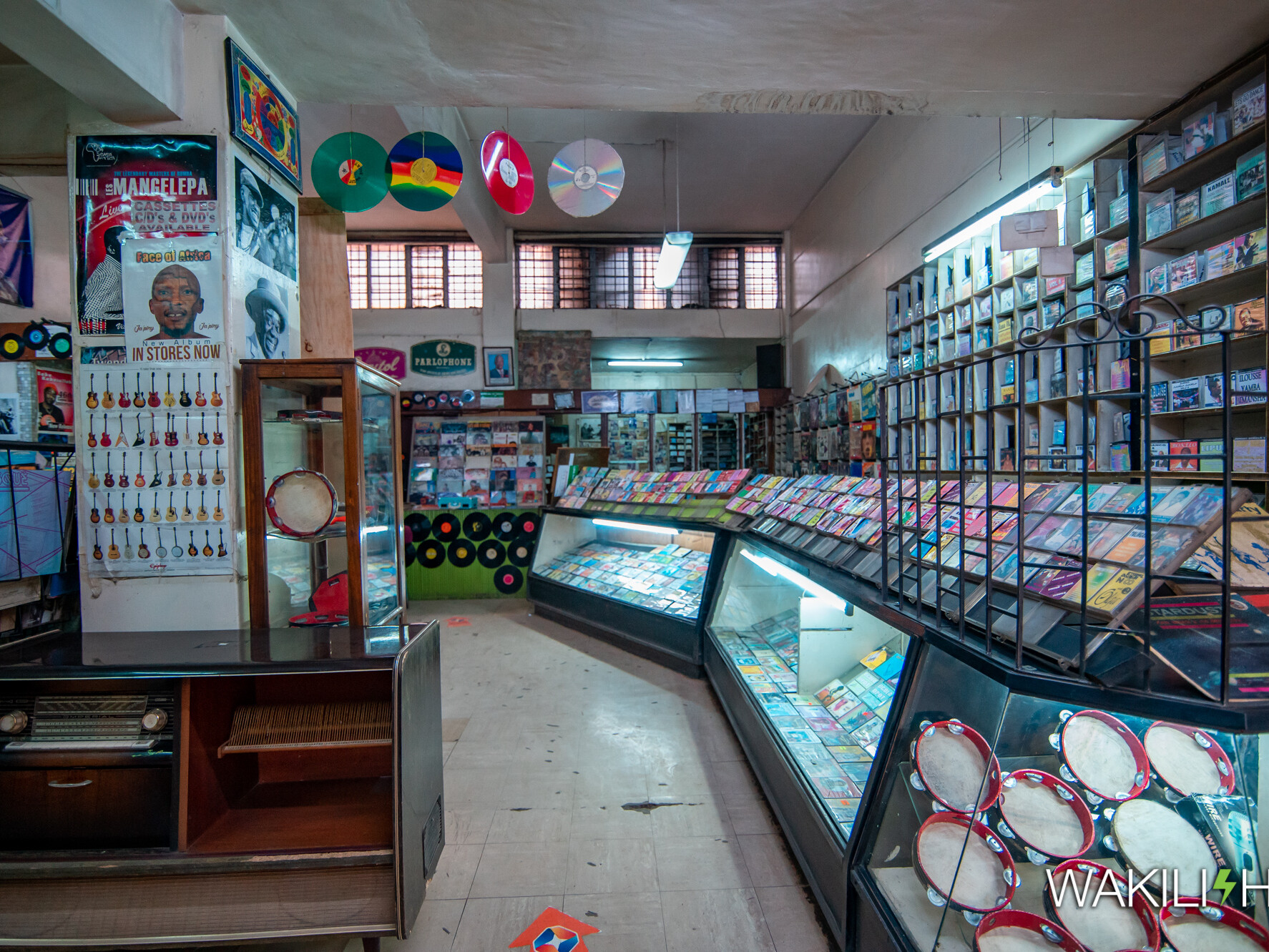The Maasai people. To the world, this conjures an image of men adorned in multicolored capes, standing tall and proud like monoliths, armed with spears, surveying the vast and endless savannah plains of Kenya. The women, a beautiful sight, heavily adorned in intricate and colorful beaded jewelry, like precious jewels sparkling in the sun. To the people of Kenya and Tanzania, however, the Maasai are more than just a picturesque image. They are a proud and ancient tribe with a deep-rooted connection to the land and their livestock. Their culture, customs, and traditions are intricately woven into the fabric of this region. The Maasai are not just a relic of the past, they are a living, breathing culture, that still holds relevance and significance in the present day.
It is widely believed that the Maasai migrated to Kenya from the Nile Valley around the 15th or 16th century. Upon arrival in northern Kenya, clashes between the Turkana and the Maasai forced Maasai speakers to continue their journey south and east of Lake Turkana. They trekked further down south to Tanzania between the 17th and late 18th centuries. Some Maasai settled along the way creating subgroups such as the Njamus (pronounced Ilchamus) who settled in and around the swamps surrounding Lake Baringo. The Njamus took up irrigation farming and for a time, were the only known Maasai subgroup that practiced fishing. There was a lot of controversy among the Maasai people over this shift from pastoralism. Pure pastoralism was considered the most important part of the Maasai lifestyle. Shifting away from pastoralism was such a big deal that the Iloikop, those who practiced a mixed economy were shunned. The Kwavi/ Ilkwapi, the pure pastoralists, were the ones considered “real” Maasai.
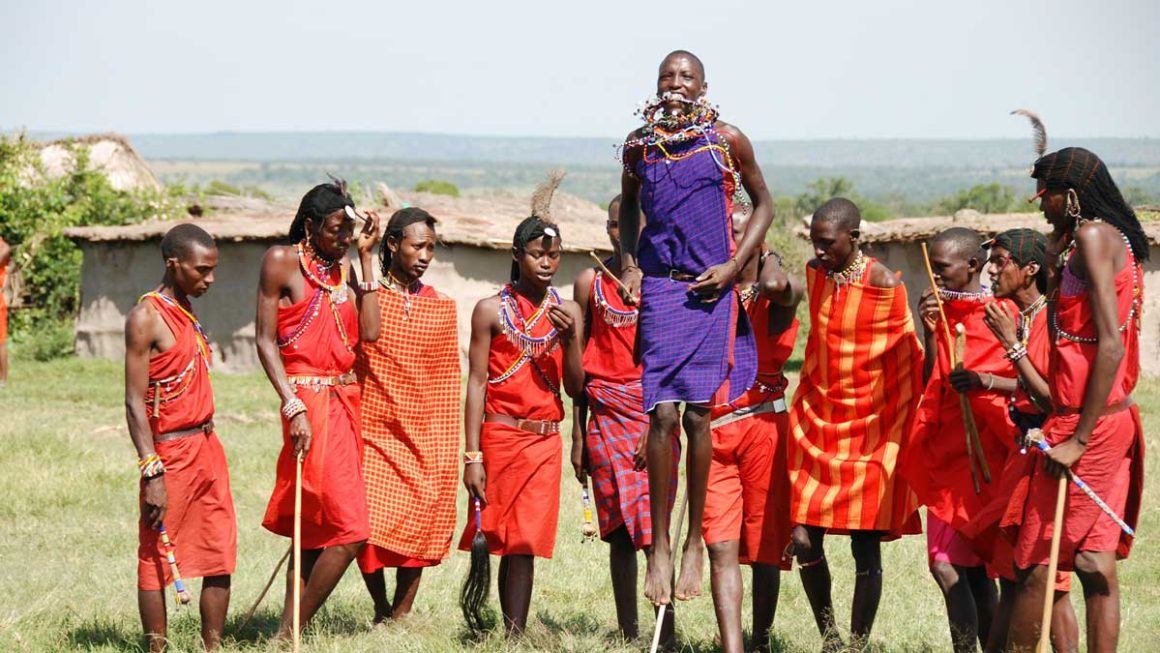
The Maasai dominated most of the Rift Valley from Kenya upto as far as central Tanzania. In central Kenya, pastoral Maasai fought, traded with, and married Bantu farmers. Today, the Maasai occupy Narok, Transmara, OlKejuado (now known as Kajiado), Laikipia, Central Baringo, and parts of the Nakuru districts, as well as the Naivasha areas in Kenya. In Tanzania, they can be found in the northern parts of the country surrounding Mount Kilimanjaro and around Moshi, Serengeti, Ngorongoro (koronkoro in Maa language) and Arusha. Among the pastoralist Maasai are the following clans: Iloodokilani, Ilkisonko, Ilkeekonyokie, Ilkankere, Ilmatapato, Ilkaputiei, Ilpurko, Iloitai, Ildamat, Isiria, Ilwuasin-kishu, and Ilmoitanik. The Ilkisonko and Ilpurko form the largest groups, followed by the Ilkaputiei and Ilkeekonyoike, respectively. Ilarusa, Ilparakuo, and a section of Ilkisonko, constitute the Tanzanian Maasai situated in the Mt. Kilimanjaro area of northern Tanzania. The demographic size and distribution of Maasai in Tanzania is larger than in Kenya.
Maasai Culture
Pastoralism is the heartbeat of Maasai culture. The land and livestock are the lifeblood of their existence, a symbiotic relationship where one cannot survive without the other. Like nomadic shepherds of old, the Maasai people’s movements are guided by their herd’s needs, always in search of the perfect pastures, water, and salt licks to sustain them. The proximity of these necessities determines their settlements, a reflection of the Maasai’s deep connection with the land and their way of life. It is a way of life that is deeply ingrained in their culture and identity. The Maasai’s nomadic lifestyle is not just about survival. It is also about preserving their heritage and customs. The land and livestock, not just a means of livelihood. They are both sacred and hold deep spiritual significance.
The Maasai live almost entirely off of their cattle, drinking their milk and blood, eating meat occasionally. Their diet is supplemented with cereals and grain obtained from neighboring farming communities such as the Agikuyu, the Kalenjin and the Kamba. For warriors, however, there are no substitutes beyond milk, blood and meat. The first thing that is done when a baby is born in the Maasai community is to draw a pint of blood from a live heifer or an ox. The source of the blood is determined by the gender of the newborn. For a girl, blood is drawn from a heifer and for a boy, it comes from an ox. Blood is also the first food for a woman after childbirth, a practice that is meant to aid in the replenishment of blood lost during labor. Frequent meat eating is frowned upon because cattle are wealth. Eating a lot of meat is essentially dipping into your wealth kitty.
Besides grazing, land is also set aside for use in cultural practices and ceremonial occasions. Endoinyo Oolmoruak in Tanzania and Nainmina Enkiyio area of Loita in Kenya are some of the areas reserved by the Maasai for religious and cultural occasions. Trees and certain plants are used to extract medicines and the knowledge is passed down from Maasai generation to the next, a practice that has occurred since long before the arrival of Western medical science. It is this connection to the land and the herd that makes the Maasai who they are and sets them apart from the rest of the world. And it is this deep connection that has helped to preserve their unique culture for centuries.
FGM and Child Marriage
An old Maasai rite of passage that has since largely been abandoned is that of transition from adolescence for girls which was marked by circumcision, conventionally described as
a clitoridectomy or Female Genital Mutilation (FGM). In the crude tradition, the girl-child’s opinion on the matter was not sought after or respected. It was a decision left to her parents and once it was decided, nothing short of an act of God could prevent it. Early marriage was another cruel tradition that the Maasai people of old practiced as a proactive remedy to promiscuity among young girls. Today, these traditions are practiced by few and in secret. Both FGM and child marriage have been illegal in Kenya since 2001 when the Children’s Act became law.
Contribution to Kenyan Art and Culture
Warts and all, the Maasai stand out, their adherence to cultural customs making them one of the most internationally recognized ethnic groups from Kenya and Tanzania. They are a tribe apart, their distinctiveness leaving an indelible mark on the world’s consciousness. In daring feats of courage and bravado, young Maasai men would venture into the jungle in search of lions to face mano a mano during their initiation ceremony from Laiyoni (boys) to Moran/Konrianga (young warriors). After Moran came King’onde (senior warriors) then Makaa and Seuri, junior elders in their 50s and 60s, and finally Meshuki, the chiefs or senior elders. Today the Maasai are still known their culture, yes, but they are also known for their unique contribution to the Kenyan art and culture scene with their vibrant beaded jewelry, a tradition that has been passed down over time from one generation to the next.
A Maasai woman typically shaves her head for hygiene and to reduce the water needs that might otherwise increase with the needs that come with keeping long hair. In the place of long hair, the women and girls don a headdress constructed using silver ornaments and colorful beads. The centerpiece of the Maasai style is composed of three different layers of multicolored shukas (capes). The women wear massive, handmade earrings (Imbenyetta), which hang on expanded earlobes. They also wear intricately beaded necklaces (Ilturesh) and bangles. Unmarried Maasai women, graceful and flexible, adorn themselves with beaded discs that hang heavy around their necks while they dance. But on the day of their marriage, they don a necklace of intricate and heavy beading. Once wed, they wear a long strand of blue beads around their neck as a symbol of their new status. The more affluent Maasai women adorn themselves in beads of vibrant hues, displaying their elevated social standing. These jewelry items are made of tiny, colorful glass beads, silver ware, plastic and other materials. Maasai men wear shukas in different colors. Most shukas have checked-patterns while the remaining shukas are plain. Red shukas are most common. Maasai men also carry a long wooden staff (eng’udi) which sometimes has a sheathed sword tucked out of view. Few Maasai men wear earrings but most can be seen wearing wide beaded bracelets called engomesha in Maa. Their shoes are handmade sandals (raiyo) made from upcycled truck tyres. Different age-sets’ members used to paint their bodies and shields to distinguish themselves until the 20th century when the colonialists prohibited Kenyan warriors from wearing their weapons in public. To adapt, Maasai warriors began to wear beaded ornament as a subtle way to make a public statement.
Beaded Jewelry
The first glimmers of glass beads in Africa came during the first millennium AD, carried over the trans-Saharan and coastal trade routes, from the distant lands of India and the Near East. In the eyes of the modern world, the Africans of old who traded precious goods for a handful of simple glass beads may seem misguided, almost foolish. We conjure images of Indian merchants exploiting gullible Kenyan natives, offering mere shillings’ worth of beads in exchange for valuable ivory. But this perspective is narrow-minded, failing to acknowledge that in their own context and time, beads held immense value. Just as salt, pepper, tea, spices and coffee were considered priceless in Europe’s past, beads were similarly treasured by Kenyan communities. It is a reminder that value is a construct, shaped by culture and context.
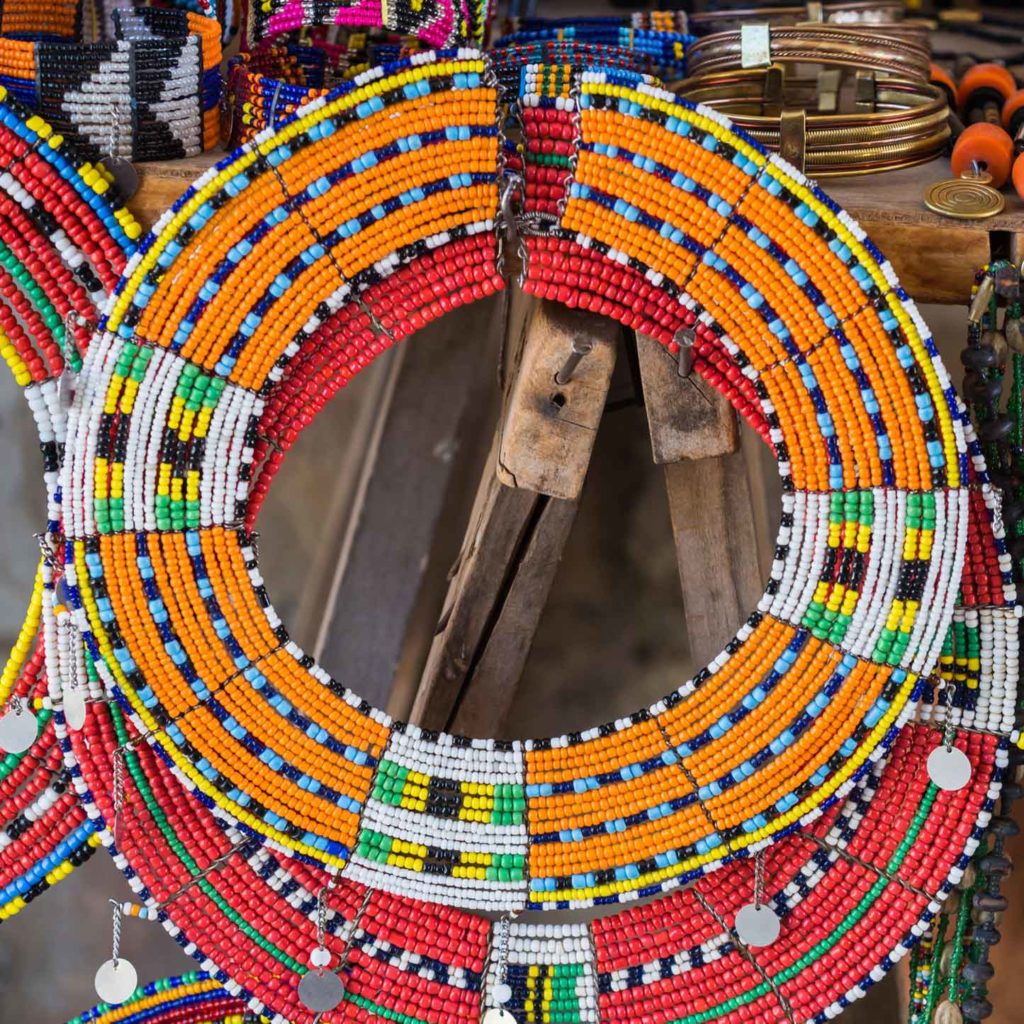
Beaded Jewelry Design
Many of the design changes in beaded jewelry were initially caused by the ebb and flow of the global trade networks, where shortages of certain types or colors of beads were felt. For example, in the 1960s the Ilmakaa age-set made small tablet beads and olive-shaped beads their trademark. This was due to the unavailability of the popular large tablet bead intepei, which was produced in the German village. As a result of the third Arabian Israeli War, the Suez Canal, which plays a huge role in global trade, was blocked, thus hindering global trade. White beads are extremely popular in beaded jewelry. Not just because white is associated with milk and cleanliness in the Maasai community, but also because white beads are needed to create contrast between other colors.
The use of symbols in beaded Maasai jewelry designs can be widely observed in many pieces. Symbols reflect the dynamics in the spheres of life that are of importance. Initially the symbols used included representations of parts of cows, the human body, nature and household objects. As cultures changed and intermingled, the symbols began incorporating contemporary aspects such as watch faces, flags of political parties and religious elements such as beaded crosses for Maasai who became Christians.
The designs of Maasai beadwork today are still shaped by the materials available to them. Today, they have access to a wider array of materials beyond the traditional glass beads, such as repurposed aluminum cooking pots, and metal wire to add strength and structure to their designs. The use of plastic is also becoming increasingly popular, particularly in beadwork that is intended for personal use, as it is more durable and easier to work with. However, in beadwork intended for tourists, the traditional leather is still preferred as it is easier to shape and pierce. These materials are sourced from a variety of sources, such as used cooking oil containers, broken utensils, and old food bags. The strings used for beading today are fishing lines, but more often, the more economical option of rolling together synthetic fibers from old food bags is used. The needles used for beading are also fabricated at home, using the metal spokes of old bicycle wheels or umbrella skeletons.
The Maasai Society of Today
Contemporary Maasai society has undergone a transformation, with most of the Maasai now leading a sedentary lifestyle, relying on a combination of farming and wage labor, as well as tending to their livestock. While most of the culture remains intact, the nomadic pastoralist way of life that once defined the Maasai is now a rarity, a fading tradition of a bygone era. Maasai beadwork has transcended its roots and become a defining feature of the Kenyan art and culture scene. The intricate designs and use of varied materials have been adopted by artisans across ethnic groups, making it a truly Kenyan art form. Bead jewelry is no longer just a Maasai thing, but a representation of the country’s diverse culture and heritage. The popularity of this art form has allowed it to evolve and spread beyond the Maasai community, becoming a symbol of unity and national pride, case in point being the Kenyan wristband.
Fears of Cultural Appropriation
Some writers have expressed fear that tourism would lead Maasai beadwork to become polluted or ‘watered down’, and not be as authentically Maasai as it used to be, with increased commodification reducing it to the realm of fashion. However, in many societies, as in the Maasai community, there is a distinction between ‘ethnic arts’ for internal consumption, and ‘tourist arts’ for external sale, and this insight is true for the Maasai people as well. Although Maasai beadwork created for the tourism market is different from the beadwork that Maasai wear themselves, the two realms are semi-permeable and in interplay with each other. Influences of outside cultures on any culture should not be seen as a recent phenomenon of contamination of an otherwise pure, premodern tradition. Instead, these reflect an ongoing process of interaction between peoples of different societies and continents which gives rise to new practices such as Maasai beadwork itself.
Wakilisha Staff
Our mission is simple: to uplift and safeguard African culture, with all its diversity, for generations to come. We celebrate our heritage and ensure its enduring legacy through in-depth coverage of the happenings across the continent, engaging initiatives, and collaboration with other African cultural practitioners.


